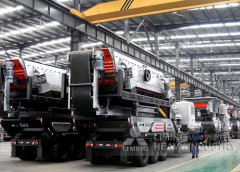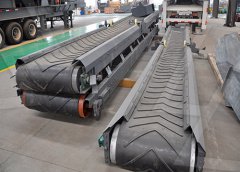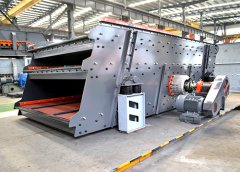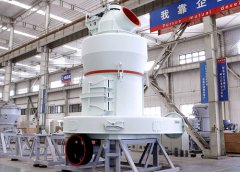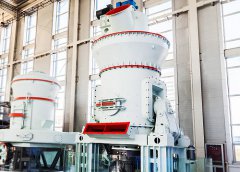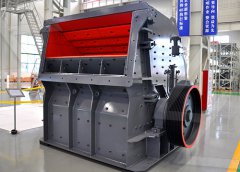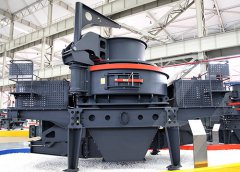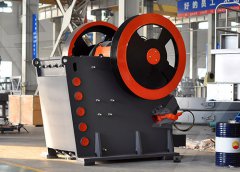
Cement clinker precursor production in an
The Ca(OH) 2(s) product (slaked lime) is a chemical precursor to cement clinker, the main component of Portland cement, and other cement varieties. This three-compartment electrolyser operates with ∼100% current Cement making consists of three major process steps: raw material preparation, clinker making in the kiln, and cement making. Raw material preparation and cement making are Clinkerization an overview ScienceDirect Topics
احصل على السعر
Solving Cement's Massive Carbon Problem
New techniques and novel ingredients can greatly reduce the immense carbon emissions from cement and concrete productionThis cement-based approach requires data on three variables: 1. cement production 2. clinker content of the cement 3. raw material content of the clinker The Calculating CO2 process emissions from Cement
احصل على السعر
Our 2050 Roadmap The 5C Approach: Clinker
Clinker is produced by heating crushed limestone and a mix of other materials (clay and sand) to 1450 °C in a rotary kiln. Clinker is later ground down to a fine powder and mixed with gypsum and other ingredients to This chapter has assessed the use of MIBA as both an aggregate component and, after grinding, a cement component, in a range of concrete-related applications, including Cement Clinker Production an overview ScienceDirect Topics
احصل على السعر
Portland Cement Clinker an overview ScienceDirect Topics
The sintering of Portland cement clinker is simply called “twice grinding and once sintering”, that is, grinding the cement with cement raw material; sintering the calcined part of the The Cambridge team found that a paste made from old cement can perform the same job just as well—and that the heat from the furnaces can turn it back into good-quality clinker at the same timeHow to make low-carbon concrete from old cement The
احصل على السعر
Clinker Production an overview ScienceDirect Topics
The production and clinker capacity of countries in 2015 and 2016 are summarized in Table 1 [9]. China is the leader on both cement production and clinker production, accounting for more than 50% of total production. Top two countries, China and India, make up about two-thirds of total cement production in the world.The carbonate-rich rock is ground up and placed in the kiln along with clay, which fuses with the quicklime and contributes minerals that will eventually help the concrete resist cracks and weathering. The The road to low-carbon concrete Knowable
احصل على السعر
Cement substitution with secondary materials can reduce
In this paper we report the maximum potential for cement substitution with secondary materials to reduce CO2 emissions globally (1.3 Gt CO2-eq. in 2018) and on a country-by-country basis.The slag is then treated as in the case of ordinary Portland cement clinker—i.e., no further addition of any material is made except such as is customary to regulate the setting. The sulphur content of the slag should, be low, and the amount of magnesia should be less than 3.5 to 4%. The cement is ground very fine, specific gravity How to Make Cement From Blast-Furnace Slag 911
احصل على السعر
Best ways to cut carbon emissions from the cement industry
The inherent chemistry behind cement production is responsible for up to 60 per cent of cement’s carbon emissions, so the release of carbon is difficult to prevent. To make cement, powdered limestone is heated and combined with a variety of components, to produce an intermediary product called clinker.To make cement, a perfect proportion of four basic oxides are important. Calcium oxide should be 65%, iron oxide should be 5%, alumina oxide should be present at 10% and last but not the least silicon oxide should be present at 20% ratio. At around 2000 degree centigrade temperature inside the kiln, a new substance is produced, known as clinker.How To Make Cement Step by Step Guide Civil Engineers
احصل على السعر
How to make low-carbon concrete from old cement Mint
How to make low-carbon concrete from old cement. The Economist 4 min read 04 May 2023, 10:30 AM IST. The reason cement is so hard to decarbonise lies in the chemistry of how it is made (PhotoFor the case study of Mugher cement factory (MCF), the results on energy use intensities showed 3.74, 3.67, and 2.64 GJ/ton of clinker, Ordinary Portland cement (OPC), Pozzolana Portland cementHow to Make Concrete More Sustainable Request PDF
احصل على السعر
How To Make Concrete Powder From Scratch DIY NJ
The basic formula to make concrete is 1 part cement, 2 parts sand and 3 parts aggregate by volume. Finally add water as needed. The stone should be between a 1/2 inch to an inch with rounded sides. Don’t use aggregate that’s jagged or too large because it makes the concrete hard to form.Cement clinker refers to a semi-finished product obtained by partly or fully burning raw materials and cooling materials. How to make clinker? The preheating and partial precalcining of the raw material are completed by the cyclone preheater, instead of the partial function of the rotary kiln, shorten the length of the rotary kiln, and the gasClinker Production Clinker Plant Cement Plant Equipment
احصل على السعر
Cement Clinker Calcination in Cement Production
The cement production processes mainly include raw material crushing and storage, raw material proportioning and grinding, clinker calcination, clinker grinding, cement packing, etc. Portland cement is the most widely used The overall value of sales of cement was about $8.9 billion, most of which was used to make an estimated $48 billion worth of concrete. Most construction projects involve some form of concrete. The Cement Manufacturing Process Thermo
احصل على السعر
Coal utilisation in the cement and concrete industries
Make-up of Portland cement. Portland cement is a fine powder produced by grinding Portland cement clinker (more than 90%), a limited amount of gypsum (calcium sulphate dehydrate CaSO4.2H2O, which controls the set time) and other minor constituents which can be used to vary the properties of the final cement.Apart from key clinker ingredients such as CaO, Al 2 O 3, and SiO 2, industrial residues can also contain MgO, CaCl2, and SO 3. Therefore, this study investigates the formation of cement clinker assemblages in the system CaO-SiO2 -Al 2 O 3 -SO 3 -CaCl 2 -MgO at temperatures ranging between 1100 and 1300 °C. The Producing cement clinker assemblages in the system: CaO-SiO
احصل على السعر
Solving Cement's Massive Carbon Problem Scientific
This process sinters (fuses) the lime into Portland cement clinker—dark gray nodules three to 25 millimeters in diameter—and drives off more CO 2. Clinker is the binder that causes cement toThat’s because coal not only provides the 1,500C heat needed in cement kilns, but that heat releases CO2 from limestone to make clinker, a key component of cement. Subscribe to newslettersHere’s 3 Ways To Cut The Carbon Out Of Cement Right Now
احصل على السعر
Laying the foundation for zero-carbon cement McKinsey
Cement acts as the binder between aggregates (fine and coarse rocks) in the formation of concrete. While cement makes up only a small percentage of the mix (approximately 12 percent by volume), it is almost exclusively responsible for the resulting CO 2 emissions. In the cement-manufacturing process, raw materials are heated to high 2 天之前Ordinary Portland Cement Clinker is the essential component in producing cement which is made by sintering limestone.In the manufacture of Cement, clinker formed by sintering or fusing without melting to the point of liquefaction, alumina-silicate materials such as clay and limestone during the cement kiln stage and happens as 3 millimeters What is Clinker? (Meaning, History, Manufacturing
احصل على السعر
Cement Extraction, Processing, Manufacturing Britannica
The clinker may be immediately ground to cement or stored in stockpiles for later use. In the semidry process the raw materials, in the form of nodules containing 10 to 15 percent water, are fed onto a traveling chain grate before passing to the shorter rotary kiln. Hot gases coming from the kiln are sucked through the raw nodules on the grate
احصل على السعر
